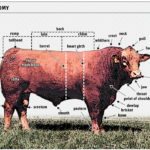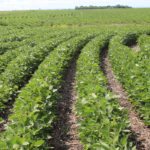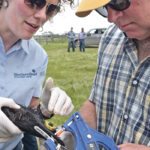LANIGAN, Sask. — A sire parentage verification study is beginning to bear fruit for researchers and ranchers. “The producers co-operating in this study have learned as much as we’ve learned,” said Bart Lardner from the Western Beef Development Centre in Lanigan. Year two of the three-year study just wrapped up, which is evaluating the use […] Read more
Cattle Call
EPDs not high on the list for commercial bull buyers
Though they contain valuable information, EPDs are among many factors that go into decisions about sires
It’s impossible to say how many commercial cow-calf producers consider the expected progeny differences (EPD) statistics of bulls they plan to buy. Dr. John Basarab, beef research scientist with Alberta Agriculture, suspects that it isn’t very many. He thinks EPD data is a few levels down on the list of bull-buying considerations. First on that […] Read more
Bulls not equally prolific in the pasture
Producers expect breeding duties among their cows to be shared when they use multiple bulls in a pasture. However, DNA parentage data collected over three years at the Western Beef Development Centre near Lanigan, Sask., showed that some bulls are far more prolific than others. Some bulls sired as few as three calves while others […] Read more

Push is on for prairie soybean plant
Farmers in Manitoba and Saskatchewan grew more than three million acres of soybeans this year. Almost all of those beans are exported to places like China, where they are processed into soybean meal and fed to livestock. Meanwhile, every year hog farmers in Western Canada import hundreds of thousands of tonnes of soybean meal from […] Read more

Low-cost producers must vaccinate animals
The vaccination program at the Western Beef Development Centre costs about $25 per cow annually. Whether producers consider that a lot or a little, the costs of illnesses, lost productivity and potential spread of disease could be much more than $25. Kathy Larson, research scientist at the WBDC near Lanigan, Sask., said bovine viral diarrhea […] Read more

Nasal vaccines deliver solid infection protection
The best offense is a good defence, particularly when trying to protect young calves, says a scientist with VIDO
Intranasal vaccines offer the best protection against respiratory infection in calves, particularly when administered at branding and again at weaning, studies have found. Dr. Philip Griebel of the Vaccine and Infectious Disease Organization in Saskatoon said bovine respiratory disease remains difficult to treat because it is so complex. Multiple viral and bacterial pathogens, combined with […] Read more
Pain relief both ethical and economical
The debate over whether producers need to provide pain relief to cattle is long over. It is both ethical and economical, says the animal welfare research chair at the University of Calgary’s faculty of veterinary medicine. “We don’t really need to have discussions about whether animals experience pain anymore or what causes pain. “The data […] Read more

Pain management important but not straightforward
Pain mitigation when dehorning and castrating cattle is a requirement under the Canadian code of practice. It acknowledges that those procedures are painful but the study of pain in cattle is an ongoing and complicated process. Dr. Karen Schwartzkopf-Genswein of Agriculture Canada is in the midst of a five-year study on the topic, using $1.2 […] Read more

Benefits of early vaccinations carry on through calf’s life: research
NASHVILLE, Tenn. — Recent research suggests beef calves should be vaccinated early to guard them against the risks of scours and pneumonia. Most receive an adequate amount of antibody-rich colostrum from their mothers but sometimes a newborn calf is not able to nurse soon enough to get the full benefit, said Vic Cortese, a […] Read more
Vaccinations not a cure-all, but important in prevention
In calves, to control:
Cattle producers may think vaccination prevents disease and that’s accurate only to a point. Dr. Nathan Erickson, a veterinarian and instructor at the Western College of Veterinary Medicine in Saskatoon, prefers to think of it as control of an illness rather than complete prevention. “Prevention creates in our mind the idea that we’re going to […] Read more



